#lund humphries
Explore tagged Tumblr posts
Text


Zaha Hadid throughout her career pushed the boundaries of architecture: defying conventions Hadid pursued her very own idea of architecture as a flow of space. Although she operated in the context of the digital turn, her calligraphic drawings remained an analog basis of her work, just like her even more spectacular paintings: already during her student days at Architectural Association London she started painting as a means to explore the spatial potency of architecture. At the same time it offered the opportunity to work out spatial „grafting“ as introduced by her teachers Rem Koolhaas and Elia Zenghelis, a method that establishes both spatial and representational constructs that Hadid realized in the painting „Malevich’s Tektonik“ and the painting related to 59 Eaton Place.
Through the years her paintings went through different transformations but continued to remain an essential tool in the development of her architectural vision. In her recently published book „Zaha Hadid’s Paintings - Imagining Architecture“ scholar Desley Luscombe follows this development and provides in-depth analyses of key paintings and how they relate to Hadid’s architecture. Proceeding from the aforementioned early paintings Luscombe in six chapters e.g. covers „Grand Buildings“ from the mid 1980s and Hadid’s engagement with the urban character of London, the Berlin project for an office building on Kurfürstendamm and ultimately the MAXXI in Rome. In each of the chapters the author elaborates on the manifold aspects that informed the paintings, e.g. layered, relational architectural ideas, precedent images by, among others, Malevich and El Lissitzky, as well as the painterly implications directed at the viewer and his/her activation and interpretation. In so doing Luscombe achieves detailed analyses that pay as much attention to the autonomous artwork as they do to its architectural dimension, an approach that brings the reader closer to understanding the purpose of painting in Hadid’s oeuvre: in painting, just like the Suprematists, she used the pictorial space to investigate topics like the spatiality of urban experiences, the role of architecture in the city or the very nature of the architectural program. Accordingly, they go well beyond a concrete, realizable building and very much distill theoretical thoughts about architecture and urbanism into series of paintings.
With Luscombe’s book Zaha Hadid’s paintings finally receive a proper scientific analysis that convincingly explains their meaning and function within the architect’s complex oeuvre. An eye-opening read!
30 notes
·
View notes
Text

Kim Lim: Space, Rhythm & Light, Edited by Abi Shapiro, Lund Humphries in association with The Hepworth Wakefield, London, 2023 [© Estate of Kim Lim / Turnbull Studio – Studio Kim Lim / DACS, London]
Cover Art: Kim Lim working on 'Twice', 1966 (or 1968) [WARE: Archives of Women Artists, Research and Exhibitions. © Estate of Kim Lim / Turnbull Studio / DACS. Photo: Jorge Lewinski. © The Lewinski Archive at Chatsworth / Bridgeman Images]
Exhibition: The Hepworth Wakefield, Gallery Walk, Wakefield, West Yorkshire, November 25, 2023 – 2 June 2024
#graphic design#art#sculpture#exhibition#catalogue#catalog#cover#kim lim#studio kim lim#turnbull studio#jorge lewinski#the hepworth wakefield#lund humphries#2020s
19 notes
·
View notes
Text
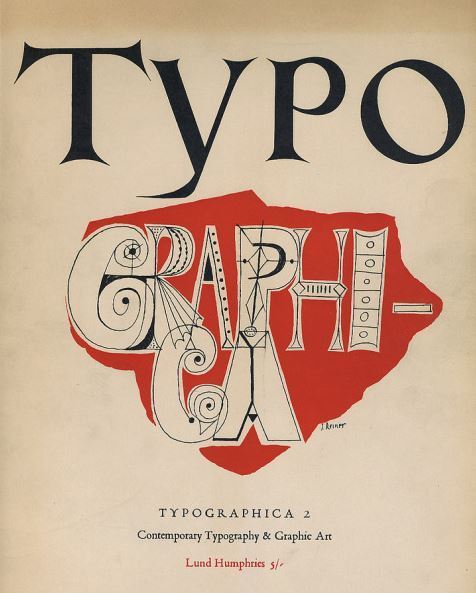
Typographica - Lund Humphries
23 notes
·
View notes
Text
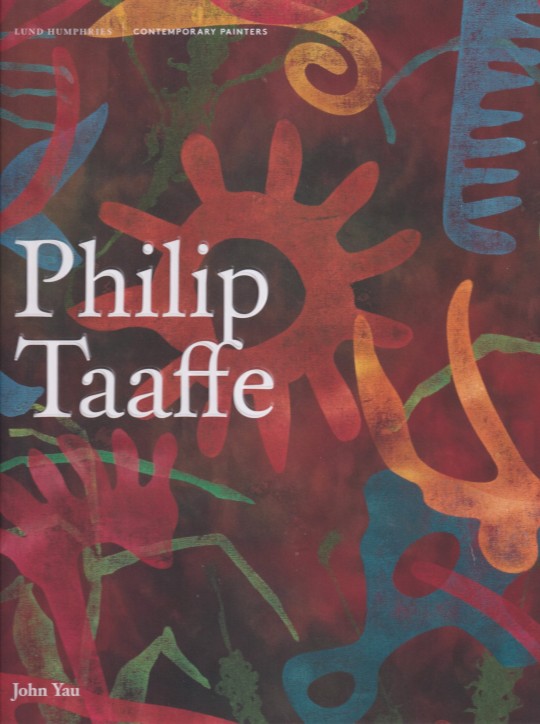
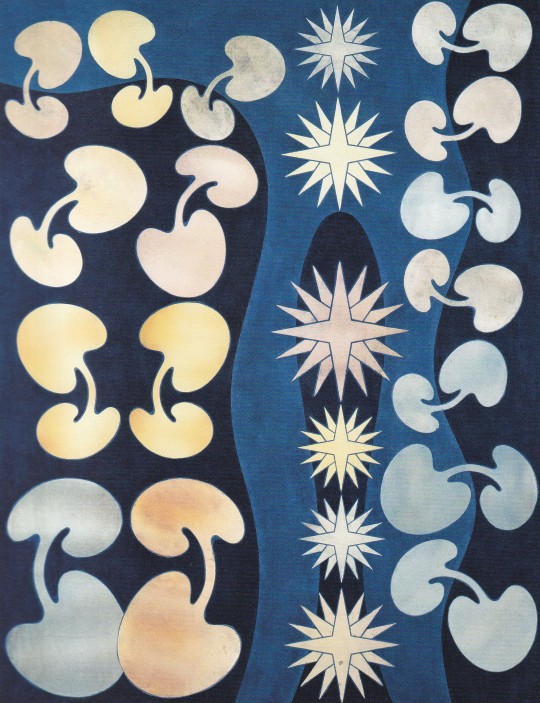
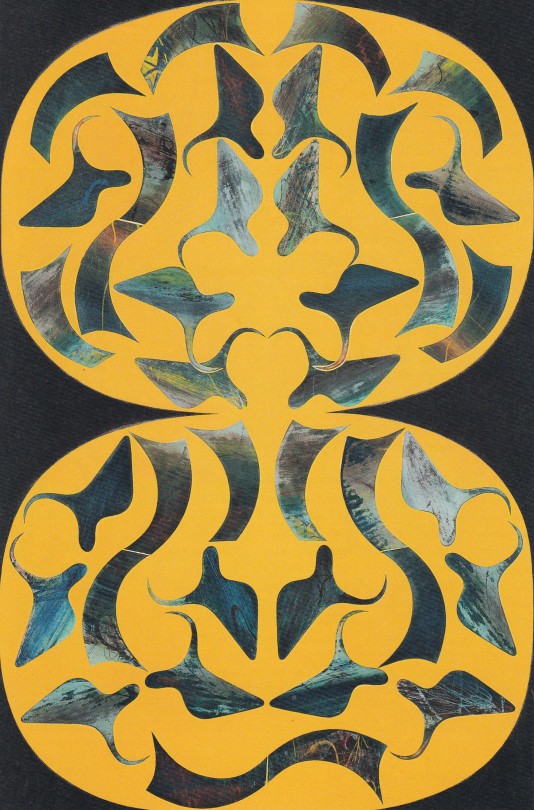
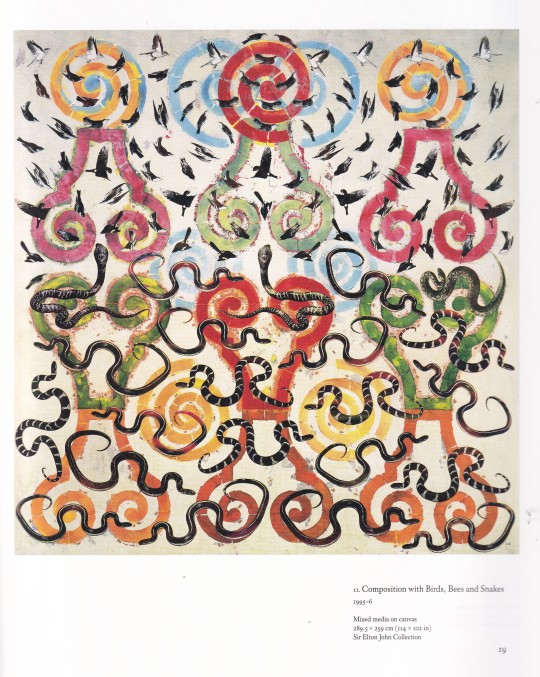
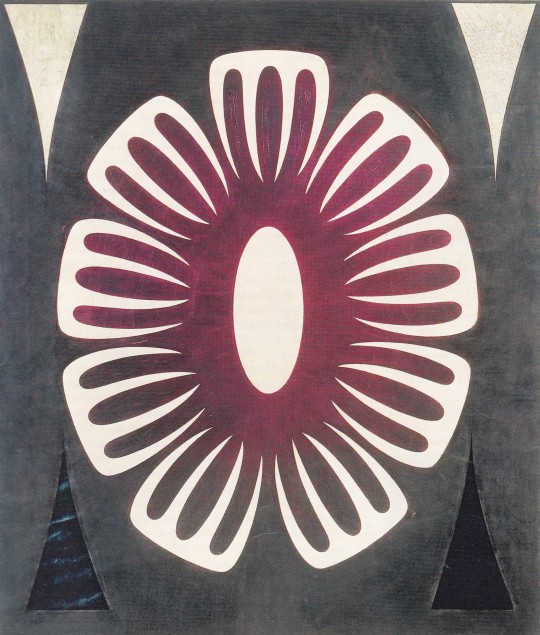

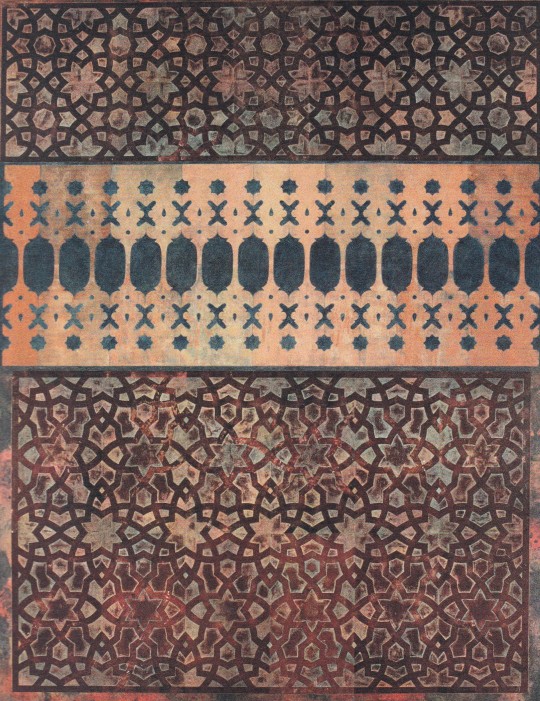

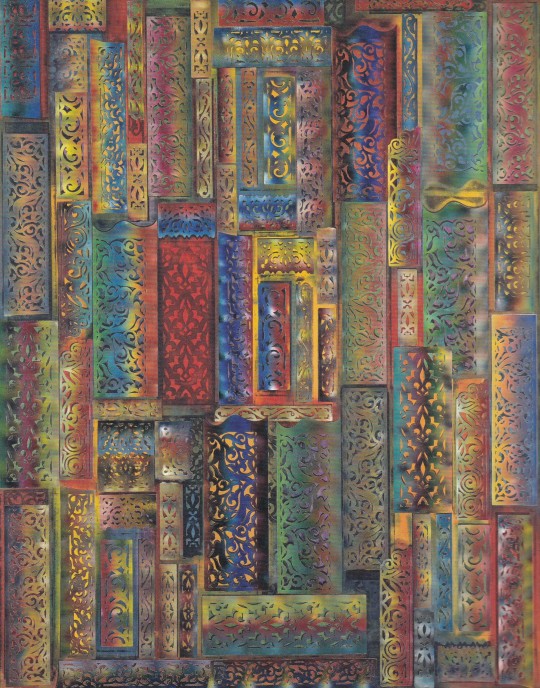
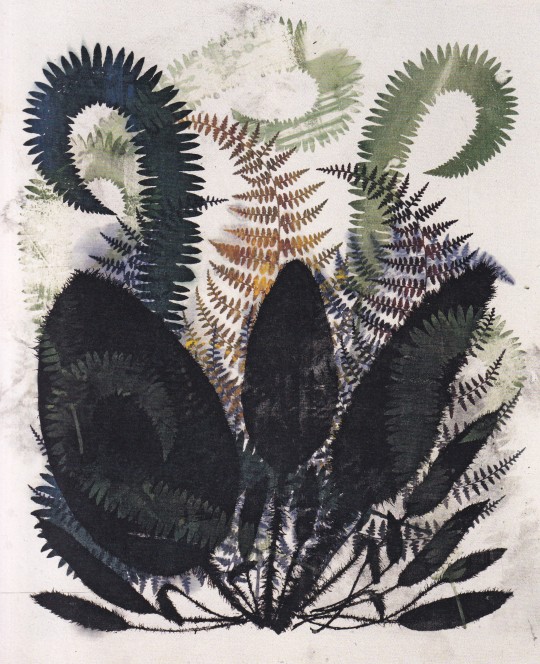
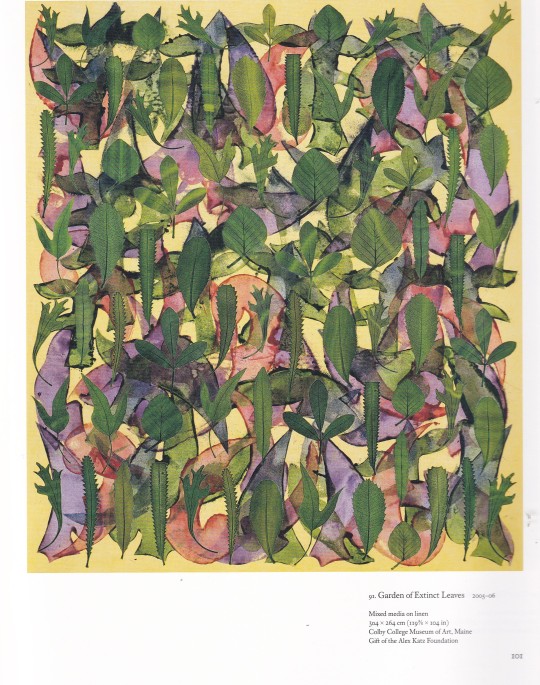

Philip Taaffe
John Yau
Lund Humphries, London 2018, 144 pages, 100 colour illustrations, ISBN 978-1-848 22-263-2, Contemporary Painters Series
euro 45,00
email if you want to buy [email protected]
email if you want to buy [email protected]
This book presents a comprehensive view of the work of American painter Philip Taaffe (b.1955), who has expanded the parameters of painting through his use of silkscreen, linocuts, collage, stencils, gouache, chine-collé, marbling, acrylic, enamel, watercolour and gold leaf. Possessing many technical skills, Taaffe has moved decisively between unique pictorial inventions and appropriations, as well as overlaying divergent modes of representation, through cultural patterns found in ornament, and biomorphic abstraction.
John Yau's insightful text is the first to look at every part of Taaffe's artistic development, from the works he made at Cooper Union while a student of Hans Haacke, to the present. It pays special attention to Taaffe's acquisition of different techniques, as well as investigating his various sources of inspiration, which include the work of experimental filmmakers Stan Brakhage, Bruce Conner and Harry Smith, the Natural History illustrations of Ernst Haeckel, and the ancient art of paper marbling.
24/01/24
33 notes
·
View notes
Text
Unpacking my Library • Lund Humphries • Artmonsky Arts • 2022

1 note
·
View note
Text
References (Journal Reflection 3)
Colourlex, 2019. Pieter Bruegel the Elder, Mad Meg. [Online] Available at: https://colourlex.com/project/bruegel-mad-meg/ [Accessed 16 December 2023].
Historychristianity, 2012. Object No. 9: Mad Meg, by Peter Brueghel the Elder (1562) presented by Dr Sarah Apetrei.. [Online] Available at: https://www.youtube.com/watch?v=QlzlPp-hoUs&t=598s&ab_channel=historychristianity [Accessed 16 December 2023].
Museum Mayer Van Den Bergh, 2019. Restoration Dulle Griet reveals unseen wealth of colour and fresh discoveries. [Online] Available at: https://museummayervandenbergh.be/en/page/restoration-dulle-griet-reveals-unseen-wealth-colour-and-fresh-discoveries [Accessed 16 December 2023].
Puyvelde, L. v., 1900. Pieter Bruegel The Elder The Dulle Griet. 10th ed. London: Percy Lund Humphries & Co LTD.
Sullivan, M. A., 1977. Madness and Folly: Peter Bruegel the Elder's Dulle GrietFootnote. The Art Bulletin , 59(1), pp. 55-66.
0 notes
Text
Documentation and Discussion On Visual Project -
The Visual Project, A box of you. This project takes reference from the work of Samuel Palmer, Using his use of landscapes. The theme of the box I created was based on landscapes and how certain areas and places growing up can influence the way you identify. I found that by using landscapes of where I grew up in North Wales it linked back to the structure mentioned in the ‘Katherine Woodward, Questioning Identity’ text that speaks of factors you cannot change related to locations, family, and other aspects. The idea of it being a self-portrait is shown through landscapes that have been influential on how people and I identify me.
As well as using the influence of Samuel Palmer the influence of Joseph Cornell was very useful within this project as his creation of different types of boxes helped with understanding the different atmospheres that can be created with a box and other elements added into it. Joseph Cornell's work takes into account different elements pre-planning how to create the perfect box, preparing elements sometimes months in advance so they have time to later work on the perfect part for his pieces.
The actual box aspect, Was done by hollowing out the middle of a book as I feel that helps craft my identity of what others think of me. Within that book, another book containing a series of artworks of locations I grew up visiting that I feel have in some way shaped my identity. The pieces of work inside the book consist of a more mixed media approach, There was the use of lino, Watercolours, Pencil, and fine liner, Trying to stay with The self-portrait aspect of the ‘Box’ project the mixed media approach attempts to show that I still don't have a defined idea of what I wanted to produce. As said previously the landscape idea came from a reference when looking at the landscapes by Samuel Palmer specifically the romanticism involved in his landscapes.
To conclude, The box created takes reference from multiple artists and the main theme is home and locational influences growing up. The influences that make you, you. The main idea was in hopes of keeping it involved with the Structure and Agency said to be involved with the main ideas of identity, (Questioning Identity, 2000).
Reference List
Hauptman, J. and Cornell, J. (1999) Joseph Cornell : stargazing in the cinema. New Haven: Yale University Press.
Katherine Woodward, (2000), Questioning Identity: Gender, Class, Nation. 2nd edn. London: Routledge
Mannoni, L., Nekes, W. and Warner, M. (2004) Eyes, lies and illusions. London: Hayward Gallery in association with Lund Humphries.
Solomon, D. and Cornell, J. (1997) Utopia parkway : the life and work of Joseph Cornell. London: Jonathan Cape.

0 notes
Photo



Cloth covered slipcase for ;Edward Ardizzone Artist and Illustrator
By Alan Powers.Published by Lund Humphries
5 notes
·
View notes
Photo





For over fifty years Lois Dodd (American, b. 1927) has painted her immediate everyday surroundings at the places she has chosen to live and work – the Lower East Side, rural Mid-Coast Maine and the Delaware Water Gap. Dodd’s small, intimately-scaled paintings are almost always completed in one plein-air sitting. Her subjects include rambling New England out buildings, lush summer gardens, dried leafless plants, nocturnal moonlit skies and views through interior windows. She often returns to familiar motifs repeatedly at different times of the year with dramatically varied results.
The critic Roberta Smith wrote in March 2013: “Ms. Dodd loves the observed world, the vagaries of nature and the specificities of old Maine houses: the way they cleave to the ground, or fill a picture frame, or shine, lights on or off, in the moonlight. She always searches out the underlying geometry but also the underlying life, and the sheer strangeness of it all.”
Lois Dodd studied at the Cooper Union in the late 1940s. In 1952 she was one of the five founding members of the legendary Tanager Gallery, among the first artist-run cooperative galleries in New York. Dodd is an elected member of the American Academy of Arts and Letters and the National Academy. In 1992 she retired from teaching at Brooklyn College. Since 1954 her work has been the subject of over fifty one-person exhibitions. In 2012, The Kemper Museum of Contemporary Art organized a retrospective of Dodd’s work which traveled to the Portland Museum of Art in Maine. In 2017 she was the subject of a monograph published by Lund Humphries with text by Faye Hirsch.
https://www.alexandregallery.com/lois-dodd
12 notes
·
View notes
Text
Cambridge University’s Introductory Reading list for Theology degrees students
So for those that don’t know, Cambridge University do have some suggestions for what students can read in order to prepare themselves for the application and interviewing stage. But I figured that this list might also be enjoyed by those who are interested in studying theology / are studying theology / want to know where to begin.
Paper 1: Languages
Hebrew
Lambdin, Thomas. Introduction to Biblical Hebrew. (London: Darton, Longman and Todd, 1973)
Greek
Duff, J. Elements of New Testament Greek (3rd edn; Cambridge: Cambridge University Press, 2005)
Sanskrit
Coulson, M., Sanskrit: an introduction to the Classical Language (2nd edn; London: Hodder & Stoughton, 1992)
Arabic
Haywood, J. A. & Nahmad, H. M. A., A New Arabic Grammar of the Written Language (London: Lund Humphries, 1990)
General Books on the Bible and its Interpretation
Grant, R. M. & Tracy, D. A., Short History of the Interpretation of the Bible (London: SCM, 1984)
Hayes, J. H. & Holladay, C. R., Biblical Exegesis: A Beginner's Handbook (3rd edn; Louisville, KY: Westminster John Knox, 2010)
Alter, R. & Kermode, F., The Literary Guide to the Bible (London: Collins, 1987)
Soskice, J.M., The Sisters of Sinai: How Two Lady Adventurers Found the Hidden Gospels (London: Chatto & Windus, 2009).
Old Testament: David
McKenzie, S.L., King David: A Biography (Oxford: Oxford University Press, 2000)*
Alter, R., The Art of Biblical Narrative (London: Basic Books, 2011)
Dietrich, W., The Early Monarchy in Israel: The Tenth Century B.C.E. (Atlanta, GA: Society of Biblical Literature, 2007)
Rogerson, J. W. & Davies, P., The Old Testament World (2nd edn; Louisville, KY: Westminster John Knox, 2006)
Rogerson, J. W. (ed.), Beginning Old Testament Study (London: SPCK, 1983)
New Testament: Jesus and the Origins of the Gospels
Johnson, L. T., The Writings of the New Testament (London: SCM, 1999)
Court, J. & K., The New Testament World (Cambridge: Cambridge University Press, 1990)
Tuckett, C., Reading the New Testament (London: SPCK, 1987)
Barrett, C. K., The New Testament Background: Selected Documents (London: SPCK, 1956)
Moule, C. F. D., The Birth of the New Testament (London: A & C Black, 3rd ed., 1981)
E. P. Sanders, The Historical Figure of Jesus (London: Allen Lane, 1993)
M Bockmuehl (ed.), The Cambridge Companion to Jesus (Cambridge: Cambridge University Press, 2001)
History: Christianity and the Transformation of Culture
Brown, P., Power and Persuasion in Late Antiquity: Towards a Christian Empire (Madison,WI: University of Wisconsin Press, 1992)
Markus, R., The End of Ancient Christianity (Cambridge: Cambridge University Press, 1990)
Clark, G., Christianity and Roman Society (Cambridge, Cambridge University Press, 2004)
The Question of God
Davis, Stephen T. (ed.), Encountering Evil: Live Options in Theodicy (Louisville, KY: Westminster John Knox, 2004)
Fergusson, David. Creation (Grand Rapids, MI: William B. Eerdmans, 2014)
Ford, David F., Theology: A Very Short Introduction (Oxford: Oxford University Press, 2000)
Migliore, Daniel L. Faith Seeking Understanding: An Introduction to Christian Theology, 2nd ed. (Grand Rapids, MI: William B. Eerdmans, 2004).
Solle, Dorothee. Thinking about God: An Introduction to Theology (London: SCM, 1990)
Understanding Contemporary Religion
Aldridge, A., Religion in the Contemporary World (Cambridge: Polity Press, 2000)
Barker, E., The Making of a Moonie: Brainwashing or Choice (Oxford: Blackwell, 1984)
Bruce, S., Religion in the Modern World (Oxford: Oxford University Press, 1996)
Davie, G., Religion in Britain since 1945 (Oxford: Blackwell, 1994)
Davie, G., Europe: The Exceptional Case (London: DLT, 2002)
Hamilton, M. B., The Sociology of Religion (2nd edn; London: Routledge, 2001)
World Religions
Neusner, J. & Sonn, T., Comparing Religions Through Law: Judaism and Islam (London: Routledge, 1999)
McCutcheon, R. T., The Insider/Outsider Problem in the Study of Religion: A Reader (London: Cassell, 1999)
de Lange, N.R.M., An Introduction to Judaism (Cambridge: Cambridge University Press, 2000)
Waines, D., An Introduction to Islam (Cambridge: Cambridge University Press, 1997)
Lipner, J. J., Hindus: Their Religious Beliefs and Practices (London: Routledge, 1994)
Philosophy of Religion
Brian Davies, Introduction to Philosophy of Religion (Oxford, 3rd edition, 2004)
Edward Feser, Five Proofs of the Existence of God (San Francisco: Ignatius Press, 2017)
John Haldane and J.J.C. Smart, Atheism and Theism (London: Blackwell, 1996)
David Bentley Hart, The Experience of God: Being, Consciousness, Bliss (New Haven: Yale, 2014)
Richard Swinburne, Is There a God? (Oxford, revised edition, 2010)
Charles Taliaferro, Evidence and Faith: Philosophy and Religion Since the Seventeenth Century (Cambridge, 2005)
Burrell, D., Knowing the Unknowable God: Ibn-Sina, Maimonides and Aquinas (South Bend, IN: University of Notre Dame Press, 1986)
Ethics
John Hare, God’s Call: Moral Realism, God’s Commands, and Human Autonomy (Grand Rapids, MI: Wm. B. Eerdmans, 2001)
Fergus Kerr, After Aquinas: Versions of Thomism (Oxford: Blackwell, 2002), ch. 7
Alasdair MacIntyre, A Short History of Ethics: A History of Moral Philosophy from the Homeric Age to the Twentieth Century (London: Routledge, 2nd ed., 1998)
Alasdair MacIntyre, After Virtue: A Study in Moral Theory (London: Duckworth, 1981), ch. 1, ch. 2, ch. 9, ch. 18
Iris Murdoch, The Sovereignty of Good (London: Routledge, 1970), ch. 2
Charles Taylor, Sources of the Self: The Making of Modern Identity (Cambridge: Cambridge University Press, 1989), esp. Part I, Part II, and Part IV
William Wainwright, Religion and Morality (London and New York: Routledge, 2005), esp. Part I and Part II
Bernard Williams, Ethics and the Limits of Philosophy (London and New York: Routledge, 2006), ch. 1 and ch. 10
General
Dixon, T.M., How to Get a First (London: Routledge, 2004). This book gives advice on teaching and learning styles and how to manage time and lectures in the Arts & Humanities. It has a helpful section on making the transition from school to university
Miscellaneous (this is compiled from another list they give to those who aren’t at the application stage and want to see what theology is all about)
Confessions by St Augustine,
Master and Margarita by Mikhail Bulgakov
The Conference of the Birds by Farid ud-Din Attar
Do Androids Dream of Electric Sheep by Philip K Dick
Daniel Deronda by George Eliot
Silence by Shusaku Endo
On Being a Muslim by Farid Esack
Ambiguous Adventure by Cheikh Hamidou Kane
Siddhartha by Hermann Hesse
A Canticle for Liebowitz by Walter Millar
Beloved by Toni Morrison
The Bell by Iris Murdoch
Revelations of Divine Love by Julian of Norwich
The Chosen by Chaim Potok
Frankenstein by Mary Shelley
White Teeth by Zadie Smith
The Death of Vishnu by Manil Suri
The Brothers Karamazov by Fyodor Dostoevsky
Brave New World by Aldous Huxley
Phaedrus, The Symposium and Phaedo by Plato provide good background and enrichment reading
Religion: If There Is No God...On God, the Devil, Sin and Other Worries of the So-called Philosophy of Religion by Leszek Kolakowski
Protestants : The Radicals Who Made the Modern World by Alex Ryrie
Authority and the Sacred: aspects of the Christianisation of the ancient world by Peter Brown
In Search of Churchill: A Historian's Journey by Martin Gilbert
Disenchanting the English Reformation by Faculty of Divinity member Richard Rex. The site where it is found, Marginalia, is itself a great forum for thoughtful essays on a whole range of subjects, religious, cultural, and other
Faculty member, Dr Katharine Dell's theological response to coronavirus
Study Theology even if you don't believe in God by Tara Isabella Burton
#Theology#Religion#Philosophy#Literature#Studyblr#Would anyone be interested in me finding more reading lists like this??
60 notes
·
View notes
Text
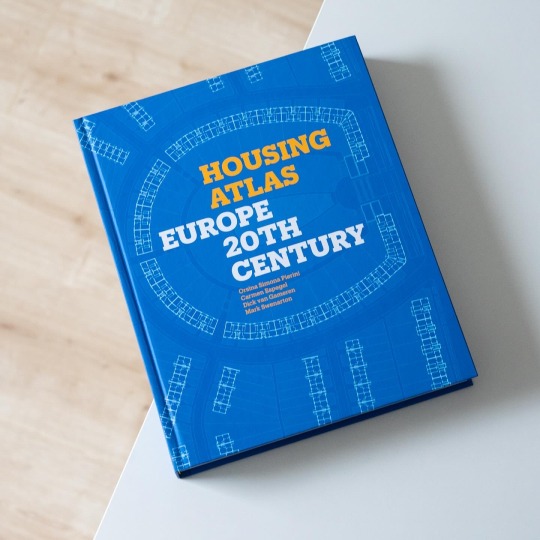

A hundred years ago the question of housing was as pressing as it is today: in view of the unbroken influx of people into the metropolitan areas housing construction is an issue cities, planners and architects intensely struggle with, especially because land costs and thus rents are constantly increasing as well. But the development of housing also is a story of innovation, imagination and progress: not so much in terms of extravaganza but in terms of models that others can build upon. This genealogy, at least in terms of Europe, has been comprehensively processed by Orsina Simona Pierini, Carmen Espegel, Dick van Gameren and Mark Swenarton in their weighty „Housing Atlas: Europe - 20th Century“, published late last year by Lund Humohries. In chronological order the atlas covers 87 projects ranging from Parker and Unwin’s Hampstead Garden Suburb in London to Herzog & De Meuron’s Rue des Suisses in Paris with each project being documented in a uniform set of plans and comprehensive illustrations. The dossiers are further contextualized by four essays penned by each of the contributing authors that address a wide range of topics related to housing in 20th century Europe, e.g. the relationship between the public and the private, the increasingly un-contextual designs of the postwar decades or the translation of past insights into new projects. To these more detailed essays Mark Swenarton provides a bracket by recounting the history of housing and by establishing a sequence of developments that facilitate the understanding of the projects featured.
With the present atlas the authors have written nothing less than a reference work on 20th century European housing: by establishing a canon of exemplary projects and supplementing them with excellent plan material the book qualifies for any professional’s library as a go-to source for inspirational housing designs. Highly recommended!
26 notes
·
View notes
Text

Frances Spalding, Prunella Clough: Regions Unmapped, Lund Humphries, London, 2012 [Flowers Gallery, London. Pallant House Gallery, Chichester. Deana Moore and Anthony Roe / Roe and Moore, London. Art: © Estate of Prunella Clough / DACS, London]

(on the way of «Picpus»)
#graphic design#art#drawing#mixed media#geometry#catalogue#catalog#cover#prunella clough#frances spalding#lund humphries#2010s
6 notes
·
View notes
Photo



Towers Hall, residential towers for the Loughborough University Leicestershire, East Midlands, England, UK; 1963-65
GMW (Gollins, Melvin, Ward Partnership)
see map
via “Architecture of the Gollins Melvin Ward Partnership”; Lund Humphries (1974)
#architecture#arquitectura#architektur#architettura#gmw#gollins melvin ward#tower#towers hall#university#loughborough#leicestershire#east midlands#england#uk#united kingdom#british architecture
261 notes
·
View notes
Photo

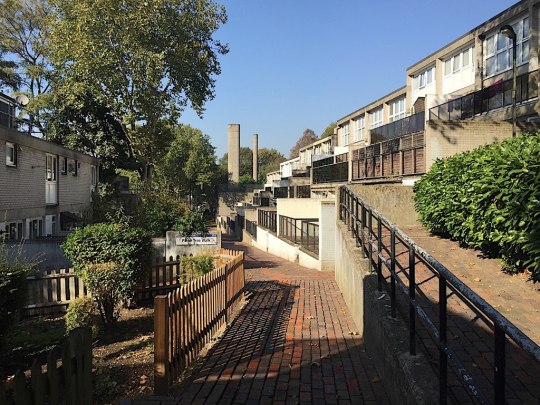
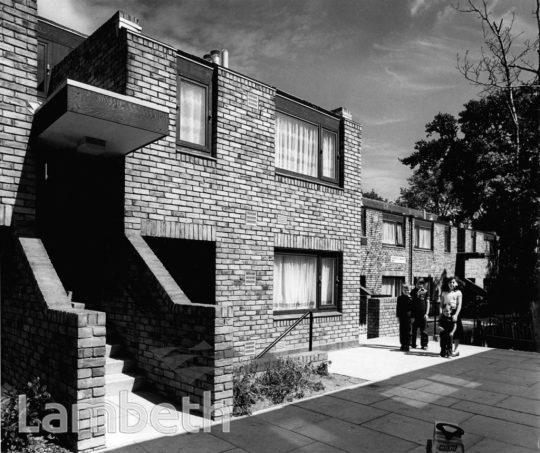


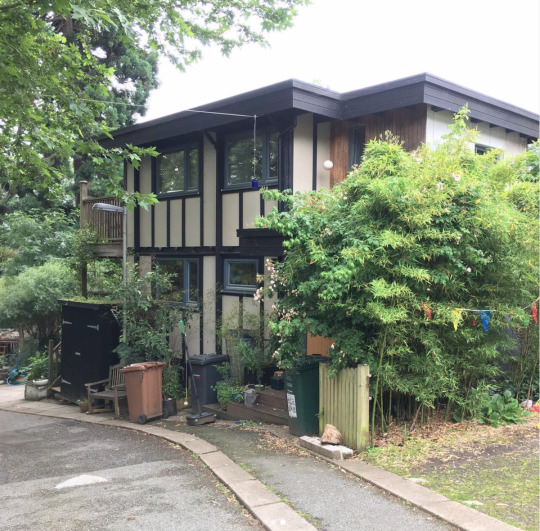

London Open House 2021 Highlights
What with Covid, a couple of Septembers spent travelling researching books, a year giving a tour for Tokyo bike and another year opening my own house for London Open House, it's been ages since I actually visited anything myself. This year the festival is bigger than ever, and goes beyond just the weekend with a whole nine days of tours and events.
I've trawled the programme and picked out a few of my highlights
Saturday 11 September Blackheath Quaker Meeting House Architect: Trevor Dannatt A new one to me! Small 1970s concrete Grade II listed building with a raised lantern. Designed to fit in with older buildings in the conservation , and make the most of the split-level site. Book here
Cheeky plug, if you're in Blackheath, why not do my Blackheath Walking Guide to modernist houses—available here).
Sunday 12 September Central Hill Estate Architect: Rosemary Stjernstedt It's been at least 8 years since I visited Central Hill. There were rumours of it being demolished back then, but now it's really under threat. I've no idea (well I do) why Lambeth doesn't value its post-war housing schemes more. Central Hill was designed by Rosemary Stjernstedt for Lambeth Borough in 1963. The tree-lined housing estate on the ridge of Central Hill & Crystal Palace, incorporating open spaces, views over London, gardens and a sense of community. It's definitely worth a visit. Book tickets here for a lunchtime walk here
Saturday 11 and 12 Sunday September Cressingham Gardens Architect: Ted Hollamby Another Lambeth scheme, and another also earmarked for redevelopment, is Ted Hollamby's wonderful Cressingham Gardens. Low-rise high-density estate located next to Brockwell Park. Innovative design with pioneering architectural elements & echoing natural topography. Under threat of demolition by Lambeth council. Tours provided of estate and rotunda.
Events, including walks of the estate and an exhibition, run Saturday and Sunday next weekend. Register here
Saturday 4 September Page High Estate Architect: Dry Halasz Dixon Partnership The what estate? I've not heard of it. It was designed by Dry Halasz Dixon Partnership in 1975. According to the website: Page High is a hidden jewel of post-war London social housing, a 92-home rooftop village in Wood Green. High above the hue and cry of the High Road, Page High (Good Design in Housing award, 1976) is a model for social housing today. The walk is today, and there's only capacity for 10 so we may be too late for this now, but I'm putting it on the list for exploring on another day. More details here Image via the Page High Estate residents association.
Saturday 4 and Saturday 11 September South Norwood Library Architect: Hugh Lea Also under threat of demolition (a bit of a theme here eh?) is the South Norwood Library. The purpose-built library is a fine example of brutalist architecture. Designed by Hugh Lea, Borough Architect for Croydon, in 1968 the main volume shows Miesian influence with an abundance of natural light, interrupted by a concrete cuboid. Open for visits this Saturday and next. Register here
Sunday 5 September Walter Segal Self-build Houses Architect: Walter Segal There's a good book out about Walter Segal which I must buy: Walter Segal Self-built Architect by Alice Grahame and John McKean published by Lund Humphries. Walters Way is a close of 13 self-built houses. Each is unique, built using a method developed by Walter Segal, who led the project in the 1980s. Houses have been extended and renovated. Sustainable features including solar electric, water & space heating. There are several events running on Sunday 5 September. More details here
Saturday 11 and Sunday 12 September Fitzroy Park Allotments If you've done my Fitzroy Park walk, you would have past the allotments, which are ordinally locked and not open to the public. Next weekend is an opportunity to the largest allotment site in the borough of Camden at approximately 3.5 acres. The lower part of the site was acquired by local government after the first world war as a result of requests by local people for the provision of secure growing space. Fitzroy Park Allotments – one of North London's best-kept bucolic secrets – is located on the south-west slopes of Highgate West Hill, alongside the much-cherished and well-known public open space of Hampstead Heath. Register here
(Image by Jim Osley)
24 notes
·
View notes
Photo

John Minton 1917 - 57
Summer Landscape
1945
Pen and ink on card
55.8 x 80.7 cm. (22 x 31 3/4 in.)
Ownership unknown
"God how I love the land to stand and see it move in intricate perspectives to the heathaze of the gentle skyline, and there always the violence, the clear sharp violence of things living and growing and of being young walking the earth ... I love the sea, treacherous, cold, impersonal, caught by the moon and shifted in the giant tides, the waves breaking forever with the subtle cruelty of terrible indifference." (John Minton letter to Judith Hollman quoted in in Frances Spalding, John Minton Dance till the Stars Come Down, Lund Humphries, Aldershot, 2005, p.76).
4 notes
·
View notes